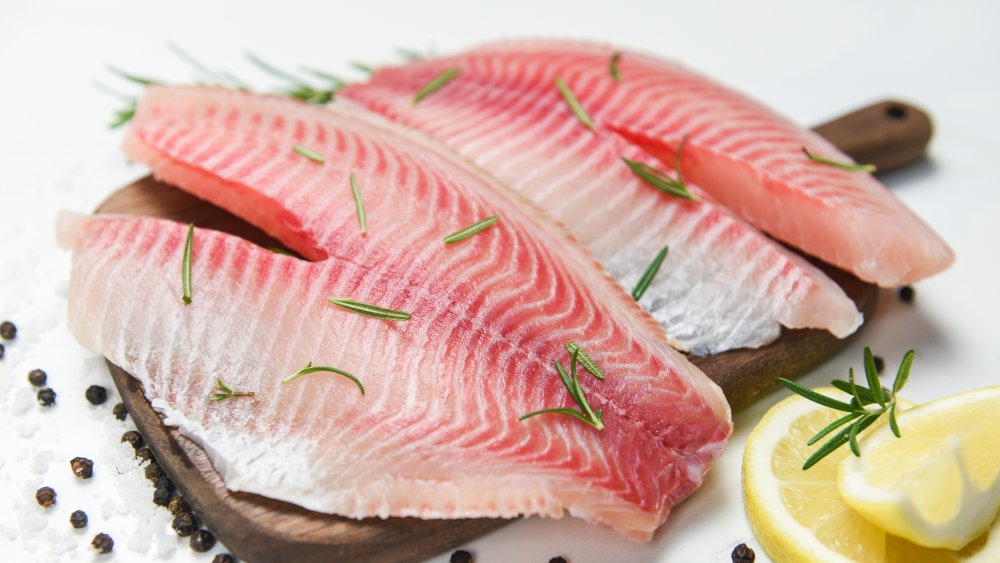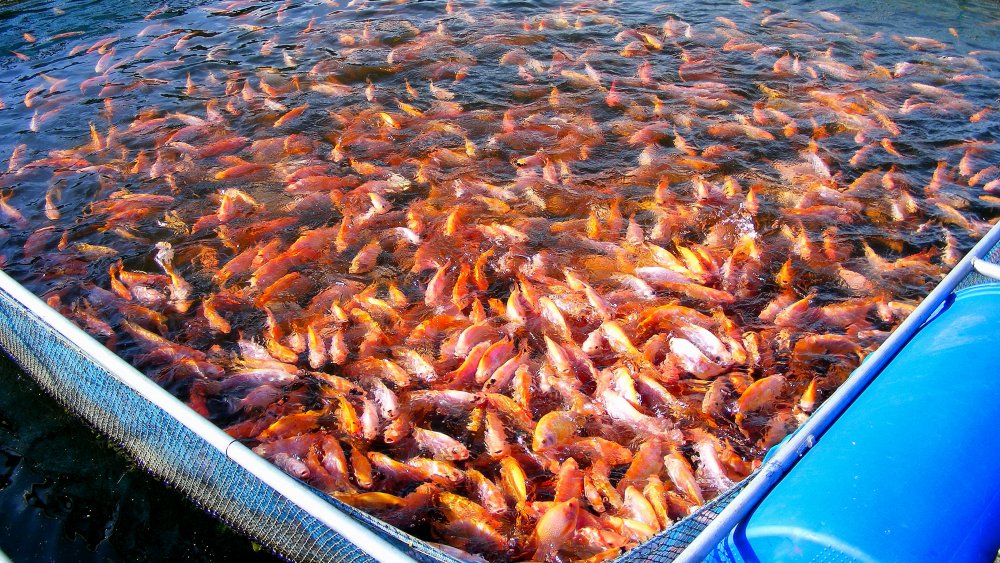You Should Think Twice About Eating Tilapia Again. Here's Why
While everyone is busy talking up fish and how wonderful it is for your diet, everyone seems to overlook one particular kind of fish on a regular basis, and that's tilapia. The inexpensive, white, firm-fleshed fish is on the list of "seafood you shouldn't eat" for many folks, and we can understand why – because its awful reputation precedes it. In the words of The Washington Post, it's "the fish that chefs love to hate," and in a 2009 report on Chinese imports, the USDA stated that fish like tilapia are "often raised in ponds where they feed on waste from poultry and livestock."
We're not surprised that tilapia has such a questionable reputation. The fish is farmed in more than 130 countries, and because it is hardy, it can grow anywhere, it can grow quickly, and doesn't mind living in crowded spaces, which can lead to health and safety problems (via The Healthy). As the Institute of Culinary Education's director of nutrition, Celine Beitchman, put it, "The biggest issue with tilapia is that we need a lot more of it than we produce. And so it needs to be produced in these environments that are not necessarily healthy for the fish." This means if we were going to eat tilapia without worrying about our own health, we need to make sure we or our suppliers are getting tilapia from farms that allow the fish to thrive without potentially toxic additives and antibiotics.
Tilapia is worth a second look
Today, efforts are underway to rehabilitate – maybe not the fish – but its reputation. If we were to set aside concerns about the way tilapia is cultivated for a second, Healthline considers the fish to be an "impressive" protein source – in a piece weighing 3.5 ounces, you'll find 26 grams of protein, no carbs, 3 grams of fat, 24 percent of the recommended daily intake for Niacin, 31 percent of recommended daily intake for Vitamin B12, and 78 percent of recommended daily intake for selenium. It may not have as much Omega-3 fatty acids as nutritionists would like it to have, but it still has some – 240 mg to be exact. Tilapia is also easy to farm, making it a sustainable food source.
The Healthy has identified countries that grow their tilapia in a mindful, sustainable way, and these include Peru, Ecuador, Taiwan, Mexico, and Indonesia. But it also warns that there is still a need to stay away from tilapia that's grown and produced in China since there is evidence that Chinese fish farmers use illegal antibiotics. If you want to think twice – again – about eating tilapia, it's important to find out where your fish comes from, so you can be sure your choice is a healthy one.

